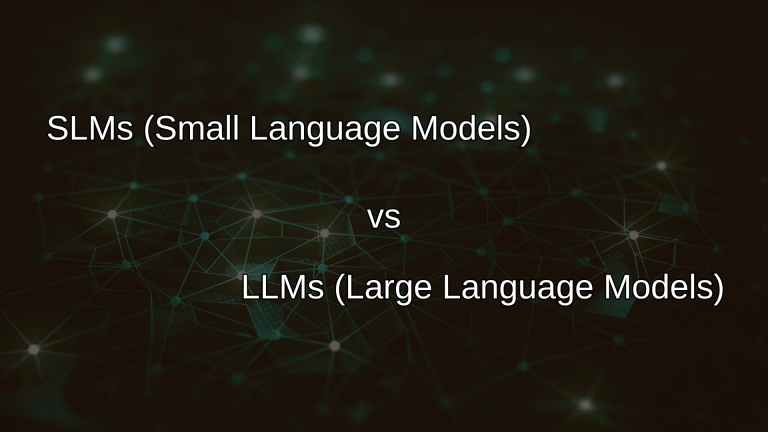Meeting Intelligence & Organizational Memory: A Strategic Implementation Guide
Meetings consume organizational time at scale. For executives, senior leaders, and project managers, 8-15 meetings per day is common. Each meeting generates information: decisions made, commitments given, context shared, problems discussed, ideas proposed. This information matters. It informs future decisions, tracks accountability, builds institutional memory, and drives execution.
Yet most of this information disappears. Notes get scattered across notebooks, apps, and memory. When you need to recall what was decided three weeks ago, you can’t find it. When someone asks about a commitment made in a previous meeting, you’re searching through fragmented notes. When preparing for a meeting, you lack context about what was discussed previously on this topic.
The business cost is measurable. Time wasted searching for information or reconstructing context. Decisions made without relevant history. Commitments that fall through because they weren’t captured or tracked. Repeated discussions of topics already addressed. Strategic initiatives that lose momentum because institutional memory lives only in people’s heads.
Traditional meeting tools (transcription services, note-taking apps, task managers) address pieces of this problem but miss the core challenge: turning meeting information into organized, retrievable, actionable organizational memory that supports better decisions and faster execution.
AI meeting intelligence systems can address this comprehensively by capturing meeting content, extracting structured information, organizing it across topics and contexts, enabling natural language retrieval, and proactively surfacing relevant information when needed. But this use case requires careful implementation to ensure it delivers strategic value rather than just creating another repository of unused information.
Is This Use Case Right for Your Organization?
Identifying the Right Business Problems
This use case makes strategic sense when your organization faces specific, measurable meeting management challenges:
Meeting volume creates information overload. If key people attend 8+ meetings daily across different projects, teams, or topics, they face genuine cognitive load managing all that information. Calculate the cost: an executive in 12 meetings daily processes information from 240+ meetings monthly. Without systematic organization, critical details get lost.
Information retrieval is slow and unreliable. When questions arise (“What did we decide about the pricing model?” “What concerns did the client raise?” “What was the rationale for that decision?”) finding answers requires searching through email, chat history, and personal notes. If this search takes 15-30 minutes multiple times daily, that’s substantial lost productivity. Worse, sometimes the information simply can’t be found, leading to decisions made without relevant context.
Commitments and action items fall through. In meeting-heavy environments, tracking who committed to what becomes difficult. If follow-through rates are low not because of unwillingness but because things get forgotten or lost in the noise, you have an organizational memory problem.
Context switching is expensive. Moving between meetings on different topics requires mental reorientation. If you’re entering a product strategy meeting after three unrelated meetings, you need to recall previous product discussions, decisions, and open questions. Without quick access to this context, meetings start slowly or miss important background.
Onboarding is difficult because knowledge is undocumented. When new team members join projects or initiatives, they lack context about previous discussions, decisions, and reasoning. If getting someone up to speed requires multiple long conversations because meeting history isn’t accessible, you’re paying repeatedly for knowledge that should be captured once.
Strategic initiatives lose momentum. Long-term projects that span months involve dozens of meetings. If no one can easily review what’s been discussed, decided, or committed to across all those meetings, initiatives drift or stall as institutional memory fragments.
When This Use Case Doesn’t Fit
Be realistic about when this approach won’t deliver value:
- Meeting volume is genuinely low. If you attend 2-3 meetings daily with straightforward topics, manual note-taking and basic task management tools likely suffice.
- Meetings are purely social or don’t generate actionable information. Some meetings are relationship-building or informal check-ins with minimal decisions or commitments. These don’t need sophisticated tracking.
- Information is already well-organized. If your organization has strong meeting documentation practices and everyone can find what they need quickly, adding AI may just create complexity.
- Privacy or confidentiality constraints prevent recording. Some meetings involve sensitive information that can’t be recorded or processed by AI systems. If most of your meetings fall into this category, the use case may not work.
- People won’t use the system. If organizational culture strongly resists documenting meetings or leadership won’t model adoption, implementation will fail regardless of technical capability.
Measuring the Opportunity
Quantify the business case before proceeding:
- Time spent searching for information: How many minutes per day do key people spend looking for meeting notes, decisions, or commitments? Multiply by loaded hourly cost. For executives, this can be extremely expensive.
- Meeting preparation time: How long do people spend preparing for meetings by reviewing previous discussions? Could this be reduced with organized, searchable meeting history?
- Cost of repeated discussions: How often do meetings rehash topics already covered because participants don’t remember or can’t access previous discussions? What’s the cost of that duplicated time?
- Cost of poor decisions: How often are decisions made without relevant context from previous meetings? What do suboptimal decisions cost?
- Follow-through improvement value: If better tracking increased commitment completion rates by 20-30%, what would that improved execution be worth?
- Onboarding acceleration: How much faster could new team members become effective with searchable meeting history providing context?
A compelling business case shows ROI within 6-12 months and demonstrates clear connection to decision quality, execution speed, or leadership effectiveness.
Designing an Effective Pilot
Scope Selection
Choose a pilot scope that proves value while remaining manageable:
Select a specific meeting category or project. Don’t try to capture all meetings across the organization initially. Pick one focused area:
- All meetings for a specific strategic initiative or project
- Executive team meetings and related one-on-ones
- Client meetings for a particular account or segment
- Product development meetings for one product line
- Leadership team meetings including cross-functional coordination
Define 3-5 key people as pilot participants. Choose people who genuinely face meeting overload, are willing to engage honestly with the system, and represent typical use cases you’d eventually scale to.
Establish clear goals for what “organized” means. Be specific:
- “Find any decision or discussion about Topic X within 30 seconds”
- “Retrieve all commitments made by Person Y in the last month”
- “Get briefed on relevant previous discussions before each meeting”
- “Track completion of all action items from meetings”
- “Onboard new team members with meeting history in 2 hours instead of 2 weeks”
Document current state baseline. Before implementing anything, measure: How much time do pilot participants spend searching for meeting information? How long does meeting prep take? What percentage of action items get completed? How often do meetings repeat previous discussions?
Pilot Structure
A typical pilot runs 8-12 weeks with clear phases:
Weeks 1-2: Setup and Configuration
- Set up meeting capture (recording, transcription, or both)
- Configure information extraction (action items, decisions, key topics, participants)
- Establish organizational structure (how meetings get tagged, categorized, linked to projects)
- Test retrieval functionality (search, summarization, context surfacing)
- Train pilot participants on the system
- Address privacy and consent requirements
Weeks 3-8: Active Use
- Capture all meetings in the pilot scope
- Have participants actively use retrieval features when they need information
- Track usage patterns: What do people search for? What information proves valuable?
- Monitor quality: Are transcriptions accurate? Are action items extracted correctly?
- Gather ongoing feedback: What’s working? What’s missing? What’s frustrating?
Weeks 9-12: Assessment and Refinement
- Measure against baseline: time savings, retrieval speed, follow-through rates
- Analyze which features delivered value vs. went unused
- Calculate actual ROI based on pilot data
- Identify requirements for scaling (technical, organizational, privacy)
- Make go/no-go decision based on evidence
Success Criteria
Define clear metrics before starting:
Retrieval speed: Finding specific information from past meetings should take less than 60 seconds versus 15-30 minutes with manual search. Aim for 90%+ reduction in search time.
Meeting preparation time: Reviewing relevant previous discussions before meetings should take 5-10 minutes with automated summaries versus 20-30 minutes manually reviewing notes.
Action item completion rate: If baseline completion is 60-70%, target 80-90% with better tracking and visibility.
Adoption rate: At least 80% of pilot participants should actively use the system for retrieval (not just passive capture) within the first month.
Perceived value: User feedback should indicate the system genuinely makes them more effective, not just adds another tool to manage.
Quality threshold: Transcription accuracy above 90%, action item extraction accuracy above 85%, decision capture completeness above 80%.
The pilot succeeds when it demonstrates measurable time savings, improved execution, and genuine user adoption, with quality sufficient that participants trust the system.
Scaling Beyond the Pilot
Phased Expansion
Scale deliberately based on pilot learnings:
Phase 1: Expand to related meetings within the same organizational unit or project area. If you piloted with executive team meetings, add their one-on-ones and direct team meetings. The context relationships make this natural.
Phase 2: Add similar meeting types in different parts of the organization. If you piloted with one product team, add others. The usage patterns and information needs will be similar.
Phase 3: Extend to different meeting categories with distinct characteristics. Client meetings differ from internal strategy sessions, which differ from operational reviews. Each may need adapted approaches.
Phase 4: Deepen intelligence beyond capture. Once basic capture and retrieval work well, add sophisticated capabilities:
- Cross-meeting synthesis (all discussions about Topic X across 6 months)
- Trend identification (how has thinking about Strategy Y evolved?)
- Commitment tracking across people and projects
- Proactive context surfacing (before each meeting, relevant previous discussions)
- Decision trees (how did we arrive at Decision Z through multiple meetings?)
Technical Requirements for Scale
As the system expands, technical robustness becomes critical:
Storage and search infrastructure. Hundreds of meetings monthly generate substantial data: transcripts, summaries, extracted information. You need:
- Reliable storage with appropriate backup
- Fast semantic search across all content
- Ability to filter by date, participants, topics, projects
- Performance that remains acceptable as data volume grows
Integration requirements. Production systems should connect with:
- Calendar systems to automatically capture scheduled meetings
- Task management tools to create and track action items
- Communication platforms (Slack, Teams) for context
- Project management systems to link meetings to initiatives
- CRM systems for client meeting integration
Privacy and access control. Not everyone should access all meetings:
- Role-based access (participants can access their meetings, managers can access team meetings)
- Project-based access (people on Project X see those meetings)
- Sensitivity levels (some meetings remain more restricted)
- Audit logs showing who accessed what information when
Quality assurance processes. At scale, ensure:
- Transcription quality monitoring and correction workflows
- Review processes for sensitive or high-stakes meetings
- Feedback mechanisms when extraction misses important information
- Regular accuracy audits of action items and decisions
Organizational Change Management
Technology is easier than changing organizational behavior:
Establish clear meeting documentation standards. What meetings should be captured? What information must be extracted? Who’s responsible for reviewing and correcting captured information? Create simple, consistent practices.
Train users progressively. Start with basic retrieval (“find information about Topic X”). Add advanced features gradually (cross-meeting synthesis, proactive context). Don’t overwhelm people with everything at once.
Model from leadership. If executives actively use meeting intelligence to prepare for meetings, reference previous discussions, and hold people accountable for commitments, adoption spreads naturally. If leadership ignores the system, others will too.
Create feedback loops. Establish easy ways for users to flag incorrect transcriptions, missed action items, or poor search results. Use this feedback to improve continuously.
Address job security concerns. Some people may worry that transparent meeting capture threatens their role. Address this directly. The goal is better organizational memory and execution, not surveillance or replacing people.
Compliance, Privacy, and Ethical Considerations
Meeting intelligence involves sensitive information and raises important considerations:
Recording and Consent
Legal requirements vary by jurisdiction. Some regions require all-party consent for recording, others only one-party consent. Some require explicit notification. Know the laws in jurisdictions where your organization operates and where participants are located.
Establish clear consent practices:
- Inform all participants that meetings will be recorded and how recordings will be used
- Provide opt-out mechanisms for sensitive discussions
- Document consent appropriately for compliance
- Consider different policies for internal vs. external meetings
Handle external participants carefully. Client meetings, vendor discussions, and partner conversations may have different consent and confidentiality requirements than internal meetings.
Data Privacy and Security
Meeting content often contains sensitive information:
Personal information: Discussions about individuals (performance, compensation, health, personal circumstances) require appropriate protection under privacy regulations like GDPR or CCPA.
Business confidential information: Strategic plans, financial data, M&A discussions, competitive intelligence, or proprietary information need security appropriate to sensitivity level.
Client or customer data: Meetings discussing specific clients may contain information governed by contracts or regulations. Ensure your meeting intelligence system complies with these obligations.
Third-party data: If using external transcription services or AI providers, understand:
- Where data is processed and stored
- How long they retain data
- Whether they use your data for training
- What security and compliance certifications they maintain
Access Control and Governance
Implement appropriate information governance:
Default to restrictive access. Better to start with limited access and expand based on need than to start open and try to restrict later.
Meeting sensitivity levels. Some meetings (board meetings, HR discussions, M&A negotiations) require more restricted access than routine project updates. Classify appropriately.
Retention policies. Define how long meeting data is retained. Some information has enduring value; other content becomes obsolete. Consider:
- Regulatory retention requirements
- Business value of historical information
- Storage and management costs
- Privacy considerations (minimizing retained personal data)
Audit and accountability. Log who accesses meeting information, particularly for sensitive meetings. This creates accountability and helps investigate any privacy concerns.
Ethical Use Considerations
Beyond legal compliance, maintain ethical standards:
Transparency about capture and use. People should clearly understand that meetings are being recorded, how information will be organized and used, and who can access it.
Avoid surveillance culture. The goal is organizational memory and effectiveness, not monitoring or evaluating individual performance through meeting participation. If people feel surveilled, candid discussion suffers.
Respect off-the-record discussions. When someone asks to have a conversation off the record, honor that. Not everything needs systematic capture.
Handle sensitive topics appropriately. Personnel issues, interpersonal conflicts, or personal disclosures shared in meetings require sensitivity. Ensure the system doesn’t make private matters more widely accessible.
Monitoring, Observability, and Continuous Improvement
System Performance Tracking
Monitor technical and quality metrics:
Capture metrics:
- Percentage of scheduled meetings successfully captured
- Audio/video quality issues requiring attention
- Transcription accuracy rates
- Time lag from meeting end to processed content availability
Extraction quality:
- Action item identification accuracy (precision and recall)
- Decision capture completeness
- Topic classification accuracy
- Participant identification accuracy
System reliability:
- Uptime and availability
- Search response times
- Processing delays
- User-reported technical issues
Usage and Value Metrics
Track whether the system delivers business value:
Adoption metrics:
- Active users as percentage of potential users
- Searches performed per user per week
- Features used (retrieval, summarization, action tracking)
- Time spent in the system
Retrieval effectiveness:
- Time to find information (before/after comparison)
- Search success rate (did users find what they needed?)
- Most searched topics or questions
- Retrieval patterns revealing organizational priorities
Execution improvement:
- Action item completion rates before/after
- Time from commitment to completion
- Follow-up meeting reduction (fewer repeated discussions)
- Meeting preparation time reduction
Business impact:
- Decision cycle time (time from initial discussion to decision)
- Onboarding time for new team members
- Executive time savings
- Strategic initiative momentum improvement
Dashboards for Different Audiences
Create appropriate views for different stakeholders:
Individual users see their personal meetings, action items assigned to them, topics they follow, and upcoming meetings with relevant previous context.
Team leaders see their team’s meetings, action items across their team, topic trends, and completion rates. They can identify where follow-through lags or where repeated discussions suggest unresolved issues.
Executive leadership sees organizational patterns: meeting load across the organization, action item completion rates, strategic initiative discussion frequency, and aggregated insights about where organizational attention is focused.
Administrative and compliance teams see system health metrics, access patterns, retention compliance, and data governance status.
Continuous Improvement Process
Establish regular cadences for system enhancement:
Weekly reviews catch immediate issues: transcription failures, missed meetings, user-reported problems, or quality degradation requiring quick fixes.
Monthly analysis examines patterns:
- Which meetings or topics generate most retrieval activity (where the system is valuable)?
- Where do users struggle to find information (gaps to address)?
- What features go unused (complexity to eliminate)?
- How is usage growing or changing?
Quarterly strategic assessments evaluate whether the system supports evolving organizational needs:
- Do current organizational structures still make sense?
- Should topic categorization evolve with changing priorities?
- Are there new meeting types to include?
- What capabilities would unlock additional value?
User feedback integration. Create structured channels for ongoing feedback: incorrect transcriptions, missed action items, poor search results, feature requests. This feedback drives prioritization of improvements.
Adaptation Strategies
Meeting intelligence needs evolve as organizations change:
New meeting patterns. As organizational structure evolves, new meeting types emerge. Ensure the system adapts to capture and organize them appropriately.
Changing information needs. What people need to retrieve from meetings shifts with strategic priorities. A company pivoting to new markets may need different topic organization than during stable periods.
Growing sophistication. Users initially benefit from basic retrieval. Over time, they need advanced capabilities: cross-meeting synthesis, trend analysis, proactive context surfacing. Build sophistication as users are ready for it.
Integration opportunities. As other systems evolve, new integration possibilities emerge: connecting meeting intelligence to project management, CRM, or business intelligence platforms.
Connecting to Your AI Strategy
This use case delivers maximum value when integrated with your broader AI strategy:
It should address a documented organizational challenge. Perhaps leadership effectiveness is a strategic priority, and better meeting intelligence enables better decisions. Or execution speed is strategic, and improved tracking accelerates follow-through. The use case should solve real strategic problems.
It builds organizational capability for knowledge management. Your first meeting intelligence implementation teaches how to capture organizational knowledge systematically, make it retrievable, and ensure it informs decisions. These capabilities extend beyond meetings. You might apply similar approaches to documentation, customer interactions, or research.
It creates an organizational memory foundation. Once meeting content is systematically captured and organized, you can build additional capabilities (decision tracking across the organization, strategic initiative monitoring, institutional knowledge preservation, or onboarding acceleration). The meeting intelligence infrastructure becomes a platform for increasingly sophisticated knowledge applications.
It demonstrates AI’s value in augmenting leadership. Successful meeting intelligence shows that AI can make senior people more effective by managing information overload, enabling better preparation, and improving execution. This builds confidence in AI augmentation across the organization.
It generates data about organizational dynamics. Meeting patterns reveal where organizational attention focuses, how quickly decisions move from discussion to resolution, where follow-through is strong or weak, and how strategic initiatives progress. These insights inform broader organizational effectiveness efforts.
It enables faster organizational learning. With comprehensive meeting memory, the organization can review how it approached previous challenges, what worked or didn’t, and what was learned. This accelerates improvement and avoids repeating mistakes.
Conclusion
Meeting intelligence and organizational memory deliver clear value when they address genuine information overload, retrieval challenges, or execution gaps that impact business results. The technology enables systematic capture, organization, and retrieval that manual approaches can’t match at scale, but success depends on disciplined implementation, appropriate privacy protections, and genuine adoption.
Before pursuing this use case, confirm it addresses a documented business challenge (executive time wasted searching for information, poor decisions made without relevant context, commitments falling through, or institutional knowledge that disappears when people leave). Define specific metrics for success. Run a focused pilot that proves both technical capability and business value in a controlled scope. Scale deliberately while building appropriate privacy protections and access controls. Create monitoring systems that ensure quality and track actual business impact.
Most importantly, view this use case as part of your broader AI strategy. The organizational memory infrastructure you build, the knowledge management practices you establish, and the cultural shift toward systematic documentation should create compounding value beyond immediate meeting management. Done well, meeting intelligence becomes a strategic capability that enables better decisions, faster execution, and institutional learning, preserving and leveraging organizational knowledge in ways that create lasting competitive advantage.







